Vibrant viper
Bring this happy snake to life by adding colours to it. Read on to find out how you can get your own colouring sheet.
Bring this happy snake to life by adding colours to it. Read on to find out how you can get your own colouring sheet.
According to the United Nations Convention on Child Rights, all children have certain fundamental rights. India accepted this charter in 1992.

Watch this video to learn about the evolution of a frog and discover the stages of change — the incredible lifecycle of a frog!

From time immemorial humans have been thinking and creating. The first greatest invention ever is considered to be the wheel. Read on.
Today it is possible to pick up your phone and talk to your friend thousands of miles away.
You might fancy eating a cake, so you go to the kitchen and quickly whip up the batter and put it in the oven. In less than an hour you have your cake and you can eat it too.
If you fall ill you have medicine to make sure that the illness never comes back.
How is all this possible?
Because of scientific inventions that have been made over the decades.
Try this crossword about inventions making use of the written and pictorial clues.
Tennis enthusiasts around the world are all set for the second Grand Slam of the year. Are you?
The second tennis Grand Slam of the year, the French Open, is all set to take place from May 20 to June 9, 2024. This iconic tournament is known for many things, including its unique surface that makes it physically demanding to play on. In fact, it has earned the reputation of being the toughest of all the Grand Slams.
This year will mark the 123rd edition of the French Open. It will be played over a series of 23 courts, including the three main ones — Court Philippe Chatrier, Court Suzanne Lenglen and Court Simonne Mathieu. Novak Djokovic and Iga Swiatek are the defending champions in the men’s and women’s singles respectively.
Here are five quick questions for you to get to know the tournament better.
Photos: Wikimedia Commons
Hello, young explorer! Here’s a quick quiz to test your knowledge of Geography. How many questions can you get right?
Here’s a geography quiz that will not only test your knowledge but is also informative! Learn about new places, geographical terms and interesting facts about our planet. Get set, go.
On May 19, Ruskin Bond turns 90. Celebrate India’s most-loved children’s author with these books and movies based on his fiction.
Think of an Indian author associated with mountains and the first name that springs to mind is Ruskin Bond. India’s favourite children’s author, who wrote his first short story at the age of 16, turns 90 on May 19. Here are books and movies by the master storyteller, all based in the mountains.
Books
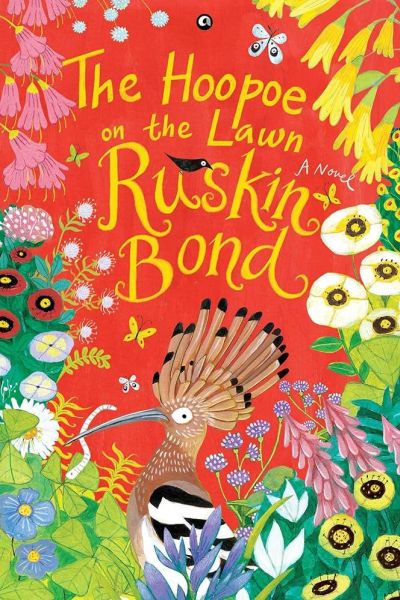
The Hoopoe on the Lawn
A new book by Aleph Book Company, it tells the story of 11-year-old Ruskin and his visit to his granny’s house in Dehra. Meet Dhuki, the gardener, who tells Ruskin about the mischievous ghost living in the peepal tree and the beautiful hoopoe that appears every evening at 3.00 pm sharp on granny’s lawn. The author also writes about how he discovered the beauty of wild gardens and his fascination for weeds, his first brush with the Quit India Movement, his first tonga ride (uncomfortable but exciting), and more.
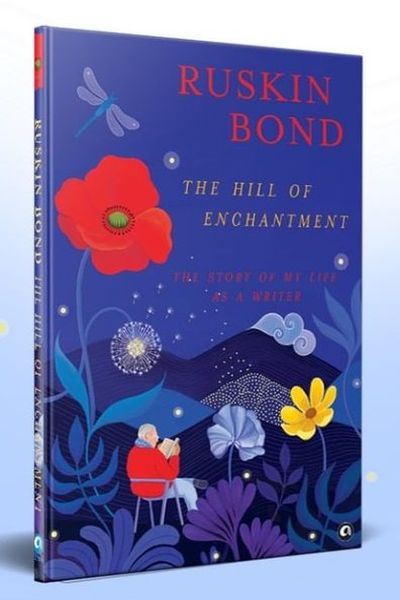
The Hill of Enchantment
This book, also by Aleph Book Company, will be released on his birthday. Ruskin Bond looks back at what made him an author: not just the experiences that influenced him, but also the mountains and their solitude that went into his writing. He writes about the Pari Tibba or Fairy Hill, visible from his window, and the pine forests that inspired many of his famous works. Also find a reading list that he has shared of his favourite books.
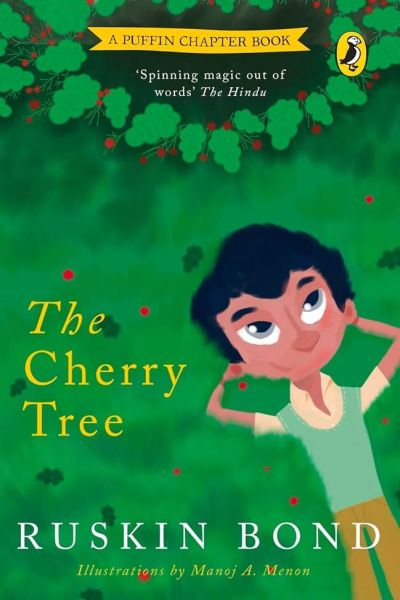
The Cherry Tree
A simple story of a young boy who plants a seed and watches it grow. Rakesh looks after the seed he has planted with great care. He waters and protects it, and his dedication is rewarded as the seed puts forth shoots that grow into a sapling. But heavy monsoon showers, a hungry goat, and woodcutters all threaten it. Nonetheless, Rakesh perseveres and, finally on his ninth birthday, he is rewarded with the sight of the cherry blossoms on his tree.
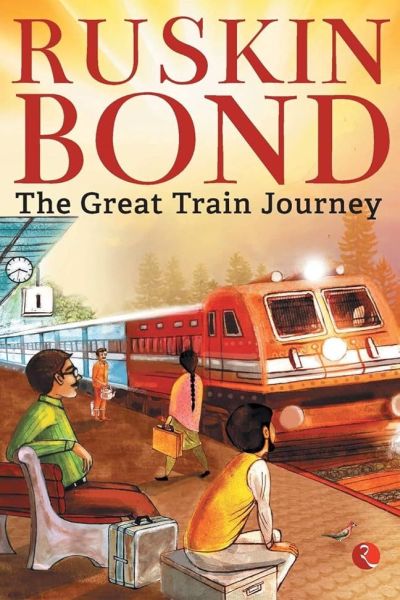
The Great Train Journey
With nothing better to do in Dehra during the summer holidays, Suraj begins to poke around the station and the trains in it. And then he gets trapped in the train. This is the first tale in the collection that revolves around trains. While a couple are set in big town, the majority of the stories are set in hill stations such as Shamli, Mussoorie, Shimla, and others. Whether it is big cats in railway tunnels or humans making friends at railway stations, this book is sure to charm you with its simple but magical words.
Movies
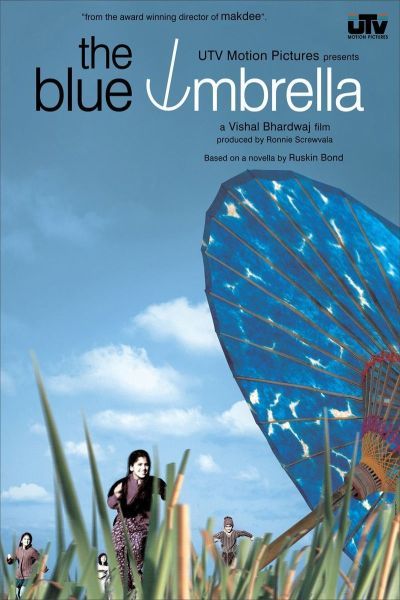
The Blue Umbrella
Based on Bond’s short story of the same name, this film tells the story of little hill girl Binya, who, while herding cows, meets a group of Japanese tourists. When the visitors see her bear-claw necklace, they offer to give her a blue umbrella if she will part with it. Binya’s mother is annoyed at the transaction, since the bear claw is considered auspicious and brings good luck. But Binya doesn’t care. The villagers are fascinated by her umbrella and she has become a minor celebrity. When Khatri, the shopkeeper, decides he wants the umbrella, he sets off a train of events that disrupts the peaceful life of the village. Who stole Binya’s umbrella? Will she get it back?
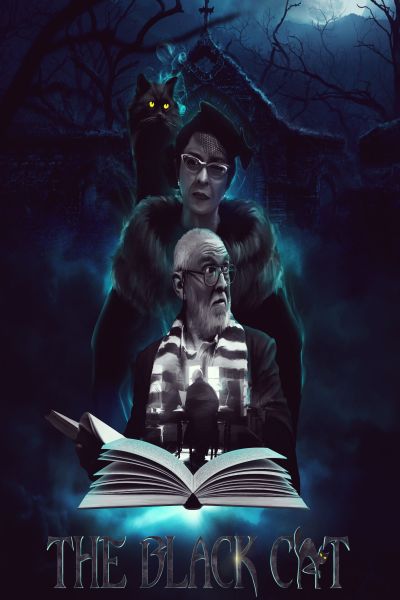
The Black Cat
In this short film, based on Bond’s short story, an elderly writer Mr. Bond, often goes to an antique shop that is packed to the ceiling with all kinds of goods. For some reason, Bond takes a liking to an old broom and buys it for ₹ 15. Soon after, a black cat appears at his cottage. While Bond tells the cat it cannot live with him permanently, the feline doesn’t seem to be leaving any time soon. It also seems to be attracted to the broom. One day, Miss Bellows lands up looking for her cat. Bond is only too happy to get rid of it. When Miss Bellows comes in, she points out that the broom is also hers. A black cat and a broom? Is the elegant Miss Bellows a witch?
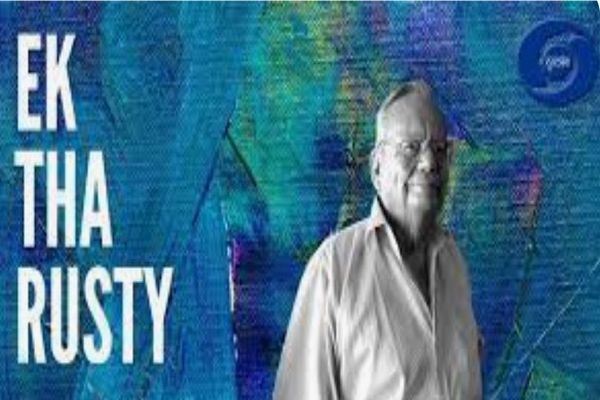
Ek Tha Rusty
Three seasons of this show were telecast on Doordarshan, based on various stories by Bond. Season 1 focused on 10-year-old Rusty, an orphan who lives in Dehra Dun, with his stern guardian John Harrison. The episodes focus on Rusty’s adventures with his Indian friends and life in 1930s, when India was under British rule. In Season 2, 30-year-old Rusty has come back from England to live in Mussoorie and is a struggling writer. In the last, Rusty has made a name for himself and is an established author. All the episodes feature beautiful snowy mountains and their forests.
Now that you know which of his work to pick up, try your hand at this jigsaw. Press start and off you go.
Beauty and danger go hand in hand in these enchanted realms. Read on to know more about forests in books and movies.

Forests in books and movies are places of beauty and danger that also play a crucial part in moving the plot forward. Check out these famous enchanted realms of Nature.
Now that you have read all about the fascinating forests, try your hand at this activity. Find the given words in the grid. There are eight of them. Get set, go!
Most props are ordinary objects like a chair or a cup or calendar. But it is usually something that is vital to the ongoing performance.
A prop is the short form of property. It is a word commonly used in theatrical circles. A prop is something an actor uses while performing. It can be anything that can be moved or carried on to a set or stage.
Here’s a game called Word Flower. The given word is CURTAIN. How many three-letter, four-letter and five-letter words can you make from it? Remember to use the letter R in every word.
Imagine you’re on a treasure hunt with a map to find the hidden treasure. Linear equations are like that map! Learn how to decode them!
Picture a line on a graph that goes up or down at the same rate. That’s what linear equations are all about! Whether it’s figuring out how many cookies you can buy with your allowance or how fast your toy car can go, linear equations make solving these puzzles super simple. So, let’s put on our explorer hats and dive into the world of linear equations, where every problem has a straight-line solution!